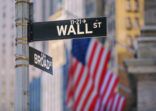Not only has the S&P 500 index reached a record high, the current US equities bull market is in history the second longest (7.5 years) and third strongest (over 300% of return), said Yiu, who advises high net worth clients mainly from Asia.
“In our view, the bull market is still ongoing, even though it’s at a maturing phase. We expect a modest uptrend, but it’s going to be be pretty bumpy along the way,” he told FSA.
First, he pointed out that the valuation of US equities is roughly 16-17 times, slightly higher than the median level historically.
Second, since 2009, there has been in total $85bn of capital outflow from US equities funds, versus about $100bn going into the bond market.
“The contrarian indicator is that even though the market has been going up for a long time, we haven’t seen any new money coming into this market.”
Third, the economy is supported by a low unemployment rate, inflation seen in selected areas, with wage growth edging up, as well as company earnings growth so far beating expectations in the second quarter.
Charles Schwab believes positive earnings growth is likely in the second half.
Yiu prefers US financials, as they are cheap and could benefit from potential rate hikes in the future.
Also, he sees the so-called defensive sectors, such as consumer staples and telecoms being sold off. Instead, “what’s leading the recovery are cyclical sectors, like industrials, technology and financial sectors. It’s a positive sign.”
Fixed income demand
On the other hand, US treasury yields have sunk to a low level, with 10-year bonds hitting 1.375% earlier this month.
The Federal Reserve announced on Wednesday to keep the interest rates unchanged, while Fidelity International believes that “December is the first realistic opportunity for Yellen to increase rates.”
Yiu said that although the low yield is a bit overdone, he expected demand to remain, supported by retirees, global pension funds and insurance companies, which look for positive returns within the fixed income space.
“Even if the yield is pretty low, it is still better than many other countries. Slow global growth, deflationary pressures in some countries as well as a firm US dollar are factors that are not going away soon.”
The key risks are the pace of the interest rate hike by the Federal Reserve, the presidential election held in November, as well as potential economic recession faced by other markets such as Europe.
For a balanced portfolio, generically, the firm recommends 60% stocks with some international or emerging market exposure.
“On the bond side, one may consider making a laddering portfolio, meaning one can stagger out maturities from short-term to medium-term,” in which the shorter term bonds might have capital gains, while the longer terms ones can generate the income, he said.
—————————————————————————————————-
The performance of S&P 500 versus MSCI World index in the past eight years, according to FE Analytics:

















